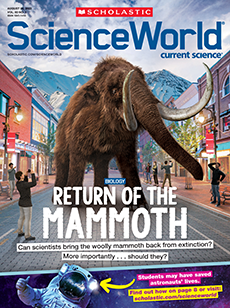Can you picture a car without windshield wipers? Probably not. After all, every car today has these safety devices. They’re just one of the many useful items that were created by women inventors!
Throughout history, women have devised brilliant innovations to solve problems. But it’s often been difficult for them to turn these ideas into reality. “Women haven’t always had equal opportunities to be inventors or received much recognition,” says Joyce Bedi. She worked as a senior historian at the Smithsonian Institute in Washington, D.C.
Until the late 19th century, women usually weren’t allowed to own property. That made it hard for them to get patents, or the legal rights to their inventions. Few colleges or jobs were open to women. Without formal training in science and engineering, women’s ideas for inventions often weren’t taken seriously.
Even so, many women overcame these obstacles to become inventors, says Bedi. Today we have better home security systems, easier-to-use trash cans, and much more because women refused to let their ideas be ignored. Read on to learn about some of the contributions made by female innovators.
Can you picture a car without windshield wipers? Probably not. Today every car has these safety devices. Women inventors created many useful items, including windshield wipers!
Women have found brilliant ways to solve problems throughout history. But often, it was difficult to turn these ideas into reality. “Women haven’t always had equal opportunities to be inventors or received much recognition,” says Joyce Bedi. She worked as a senior historian at the Smithsonian Institution in Washington, D.C.
Until the late 19th century, women usually couldn’t own property. That made it hard to get patents, or the legal rights to their inventions. Few colleges or jobs were open to women. Most women didn’t have formal training in science and engineering. So their ideas for inventions often weren’t taken seriously.
But many women overcame these challenges to become inventors, says Bedi. They refused to let their ideas be ignored. That’s why we now have better home security systems, easier-to-use trash cans, and much more. Read on to learn about some inventions made by women.

